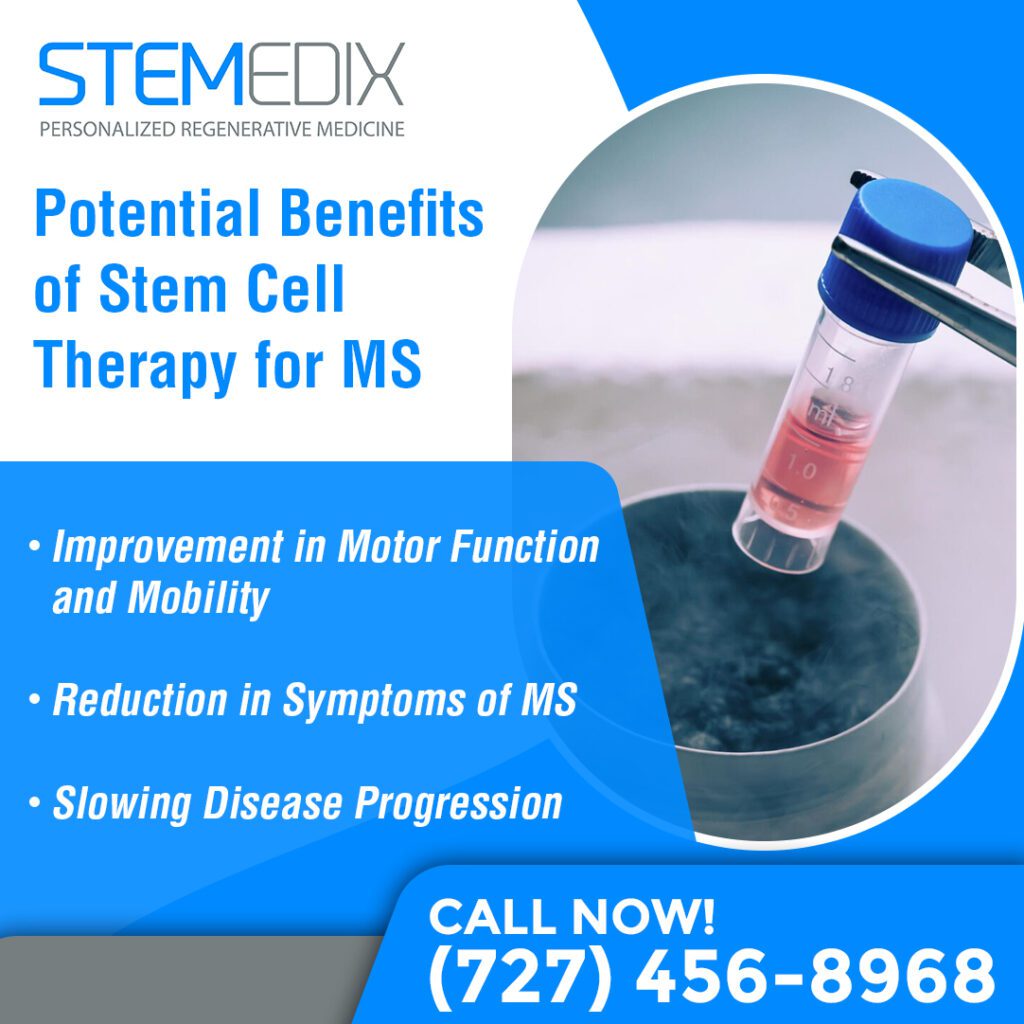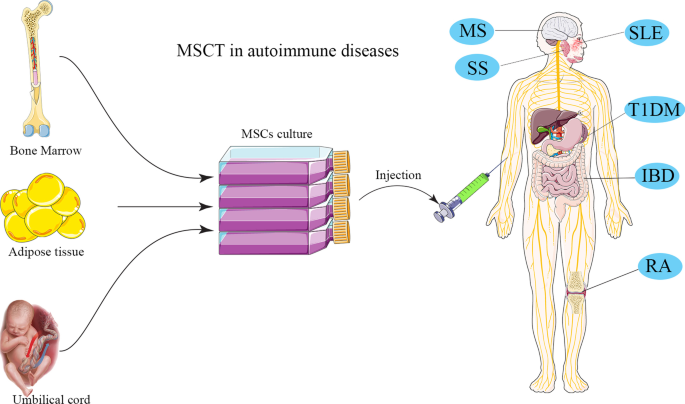A Biased View of Regenerative Medicine For Multiple Sclerosis
Wiki Article
A Biased View of Regenerative Medicine For Multiple Sclerosis
Table of ContentsSome Known Factual Statements About Regenerative Medicine For Multiple Sclerosis Regenerative Medicine For Multiple Sclerosis for BeginnersSome Ideas on Regenerative Medicine For Multiple Sclerosis You Should KnowFascination About Regenerative Medicine For Multiple SclerosisExamine This Report on Regenerative Medicine For Multiple SclerosisExcitement About Regenerative Medicine For Multiple SclerosisWhat Does Regenerative Medicine For Multiple Sclerosis Do?
The mesenchymal stem cells transplanted during stem cell treatment can separate and grow to create new cells that can replace the damaged cells of the worried tissue. This might restore neurological features in patients with this problem. These benefits of stem cell therapy are more sustained by the capacity of MSCs to promote healing.Patients with several sclerosis are usually treated with mesenchymal stem cells. These are multipotent stem cells that have the capability to separate and develop to develop a large range of cell types in the body. Once transplanted, these stem cells can develop to form healthy afferent neuron thus sustaining the regrowth of the broken cells of the nerve system.
Once transplanted, the stem cells migrate to areas of inflammation or damage within the main anxious system (CNS). They are naturally brought in to the websites of injury where the body immune system is striking the myelin sheath, the safety covering of nerve fibers. The stem cells work by advertising the repair service and regeneration of harmed myelin, potentially recovering feature to influenced afferent neuron.
The smart Trick of Regenerative Medicine For Multiple Sclerosis That Nobody is Talking About
Stem Cell Study on MS The National Numerous Sclerosis Culture, in addition to other organizations, is proactively moneying and supporting study right into mesenchymal stem cell therapy for several sclerosis to discover their potential and improve treatment procedures. The objective is to establish safer and more effective means to use stem cells in treating MS.
Here are evaluations from people of the Swiss Medica facility. The patient traveled from England seeking relief from his MS signs and symptoms, a condition he has fought because 2006. For many years, he has actually fought with exhaustion, mobility concerns, and complications with his bladder and digestive tract, all originating from nerve damage.
His therapy experience was smooth. He additionally appreciated that his travel, accommodations, and vegan dietary choices were attentively set up. "The clinical personnel were superior, specifically the medical professional. Everything was plainly clarified, and they were comprehensive in their checks. I would absolutely suggest this location." The person traveled from Romania seeking treatment for MS after hearing positive feedback about stem cell therapy for the disease.
Obtain a complimentary online appointment to discover how stem cells will function for your case, and what are the duration and expense of the treatment. Uccelli, A., Laroni, A., Brundin, L., Clanet, M., Fernandez, O., Nabavi, S. M. Regenerative Medicine for Multiple Sclerosis., Muraro, P. A., Oliveri, R. S., Radue, E. W., Sellner, J., Soelberg Sorensen, P., Sormani, M. P., Wuerfel, J. T., Battaglia, M
Stem cells are cells in the body that can mature into develop cells that serve an offer functionCertain There are two major types of stem cells: embryonic stem cells and grown-up stem cells.
are found in some adult cells and body organs consisting of the bone marrow, skin, blood, and this contact form brain. Grown-up stem cells are not as adaptable as embryonic stem cells and are as a result more minimal in terms of the sorts of cells they develop right into. The special residential or commercial properties of stem cells supply pledge for brand-new treatments that can slow/halt MS condition activity and repair service cells damage in the main nerves.
The 9-Minute Rule for Regenerative Medicine For Multiple Sclerosis

The procedure involves gathering stem cells from an individual's very own (autologous) bone marrow. The individual is after that treated with chemotherapy to diminish the body immune system and stem cells are reintroduced right into the body where they mature into new, healthy immune cells - Regenerative Medicine for Multiple Sclerosis. Stem cells can be injected into the body in different ways

In 2000, the MS Culture of Canada and MS Scientific Study Structure funded a clinical trial including HSC transplants, led by Drs. Mark Freedman and Harry Atkins from the Ottawa Healthcare Facility Study Institute/University of Ottawa. The aHSC therapy readily available in Canada is a treatment that uses high-dose radiation treatment, additionally called conditioning.

Getting The Regenerative Medicine For Multiple Sclerosis To Work
Neural stem cells (NSC) are discovered in the brain and can grow into numerous sorts of mind cells consisting of nerve cells, oligodendrocytes, and astrocytes. NSCs may serve to repair or safeguard the brain and regulate the immune system. Early clinical tests in non-human primates demonstrated that therapy with NSCs profited the development of MS-like illness in pet versions.The results from these safety Home Page studies declare for future stem cell and regenerative medicine treatments in MS. Future clinical trials (stage 2 and 3) with bigger numbers of participants and controls are necessary to examine the efficiency of this therapy for MS. As shown by the examples over, there is a huge variety of research study occurring that will certainly give added responses about using stem cells to deal with MS.
Stem cell therapy is thought about safe, yet, like any clinical procedure, it carries some threats, such as momentary swelling or pain at the shot site. However, severe negative effects are unusual when performed by certified professionals.
The 7-Second Trick For Regenerative Medicine For Multiple Sclerosis
Numerous sclerosis (MS) is a persistent condition of the central nerves that influences the brain and spine. It is characterized by the degradation of myelin, a material that covers nerve fibers, causing interruptions in interaction in between the brain and the rest of the body. Symptoms can differ extensively and include muscle weakness, vision problems, discrepancy, and exhaustion.Several sclerosis is characterized by the immune system wrongly assaulting the protective sheath (myelin) that covers nerve fibers, triggering interaction issues in between the mind and the rest of the body. The condition can cause the degeneration or irreversible damages of nerves. Signs vary commonly among patients and can include fatigue, wheelchair issues, discomfort, and cognitive adjustments.
Report this wiki page